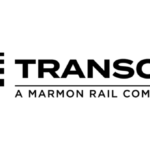Last Updated on March 16, 2022 by Lita Rouser
Guest Column by Lita Rouser, former Cass County Chamber Board President
“Shop local” is a phrase that was popularized locally by former Cass County Chamber of Commerce President Karl Burkhart in the late 90s. Karl knew the importance of keeping the dollars people spend circulating in the local economy instead of going elsewhere, so he introduced the Chamber Board to a great marketing idea to promote local businesses. Karl’s “shop local” campaign was a success and the phrase has since become common in Cass County.
Even with a great shop local marketing campaign and a host of local shopping options, people still sometimes think, “Wouldn’t it be great to have a (insert business name) here.” This sentiment shows as much devotion for a community as anything since at its core, it expresses a desire to build a strong and vibrant city through business expansion.
Fast forward from Karl Burkhart’s days to today and the use of social media, I often see online posts about new development in Cass County. Some of the comments are favorable and full of support. Sometimes the comments express the disappointment of “instead of this kind of business”, we need “that kind of business”. Or “instead of this kind of business, we need jobs.” I read these very kinds of comments recently and started thinking about the complexities of corporate site selection. It’s not a simple process and not one where a local economic development person can simply pick up a phone, call a corporate business headquarters, and say, “We want you to locate in our town.” It can be a long drawn out process sometimes not involving local economic development people until the final stages.
The process of site selection has changed a lot since Karl’s days with the Cass County Chamber, in part because of the new technology and data available to site selectors. The result is a more complicated process that allows a company to put laser focus on the optimal location for a headquarters, retail site, distribution center, data center, software engineering, call center, manufacturing facility, and so on.
Here’s a general overview of the main components of a the modern site selection process:
The Site Selection Team. When a company is looking to expand its corporate footprint, it puts together a site selection team. For those companies that have a constant expansion goal, site selection teams are a permanent part of their corporate makeup. Ordinarily the team will include people who are part of the corporation’s business unit, logistics department, executive team, tax department, human resources and often third-party consultants.
What are the expansion requirements? Understanding the expansion requirements is often the first task for the site selection team. A call center will have much different project requirements than a headquarters. A headquarters will have much different requirements than a retail site. Among other priorities, the site selection team identifies employee skill requirements, important deadlines, how many employees will be hired, how much they will be paid, how close the location is to suppliers and vendors, what does the property costs, whether local demographics align with the company’s target market, and does the location support the needed infrastructure of the project.
Research. Research. Research. To narrow their focus, a site selection team looks at extensive data to rule out some locations and rule in others. Those “ruled-in” align with the project requirements mentioned above. When a location is ruled out, it means it had one or more factors that didn’t meet the project’s requirements. Often site selection teams review large amounts of data about a location, including local workforce skills, cost of living in the area, population, the unemployment rate, utility costs, the types of nearby industries, the materials made locally and the materials shipped into the area, wage rates, time zone considerations, union rates, tax rates, and other variables. The once long list is narrowed to 10 or so potential sites.
More Research. To choose the location finalists, the site selection team conducts further research, such as economic incentives, real estate values, the available workforce, transportation access in and out of the location, and more. This kind of research is called market analysis. Once the research is analyzed, the project team creates a short list of locations using a scoring method they develop based on their expansion priorities. This phase of the research results in identifying two to three finalists. Sometimes this is the point at which local economic development representatives are contacted for the first time about the potential corporate expansion into their area.
Visiting the Location. Now that the list of possible sites is narrowed to just a few, the site selection team visits the targeted communities. (There are times — although fewer — when this step takes place without the knowledge of local leaders, almost like a secret shopper approach.) This gives the site selection team a chance to see what cannot be communicated on a website or brochure. Local leaders and community representatives often take the site selection team on tours of the area, which include visits to the proposed location and the area amenities, such as parks, schools, cultural centers, and so on. The site selection team will talk with workforce representatives, utility company leaders, elected officials, economic development personnel, and more. The information from the tours is a critical part of the process and allows the site selection team to better understand the differences between the finalists.
Reaching an Agreement. Now that the tours are over, the site selection team evaluates their findings and begins to enter into final stage talks with representatives from each community. State and local leaders may confirm incentives, such as tax abatement, cash grants, utility rebates, funding for workforce training, and other incentives. In this phase, real estate terms are finalized and closed.
All of these steps take place before the first shovel of dirt is turned over to begin building. Modern day site selection is lengthy and complex. The beginning of a building project seen today most certainly started several months ago.
(Resource: Site Selection Group)





